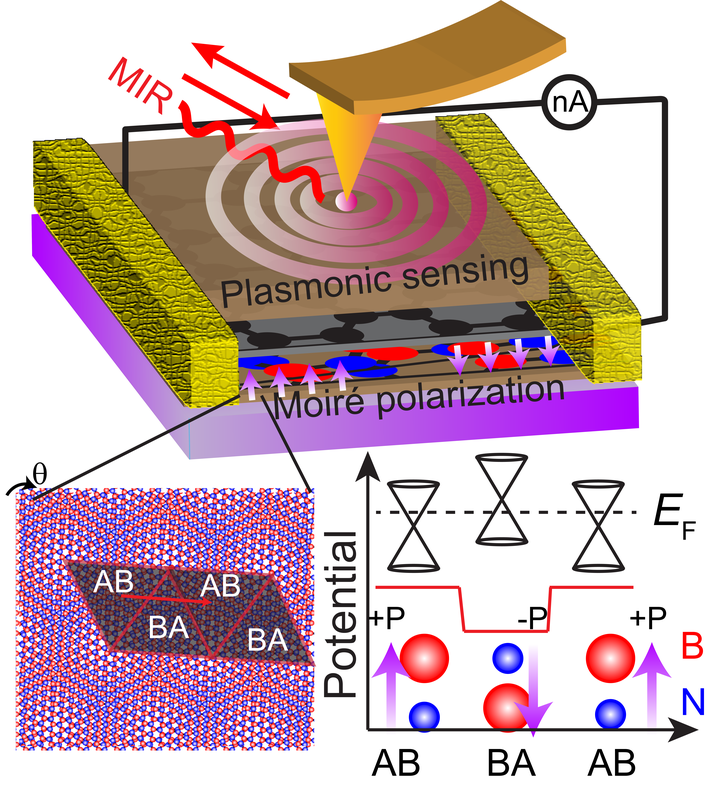Plasmonic polarization sensing of electrostatic superlattice potentials

Abstract
Plasmon polaritons are formed by coupling light with delocalized electrons. The half-light and half-matter nature of plasmon polaritons endows them with unparalleled tunability via a range of parameters, such as dielectric environments and carrier density. Therefore, plasmon polaritons are expected to be tuned when in proximity to polar materials since the carrier density is tuned by an electrostatic potential; conversely, the plasmon polariton response might enable the sensing of polarization. Here, we use infrared nano-imaging and nano-photocurrent measurements to investigate heterostructures composed of graphene and twisted hexagonal boron nitride (t-BN), with alternating polarization in a triangular network of moiré stacking domains. We observe that the carrier density and the corresponding plasmonic response of graphene are modulated by polar domains in t-BN. In addition, we demonstrate that the nanometer-wide domain walls of graphene moirés superlattices, created by the polar domains of t-BN, provide momenta to assist the plasmonic excitations. Furthermore, our studies establish that the plasmon of graphene could function as a delicate sensor for polarization textures. The evolution of polarization textures in t-BN under uniform electric fields is tomographically examined via plasmonic imaging. Strikingly, no noticeable polarization switching is observed under applied electric fields up to 0.23 V/nm, at variance with transport reports. Our nano-images unambiguously reveal that t-BN with triangular domains acts like a ferrielectric, rather than ferroelectric claimed by many previous studies.